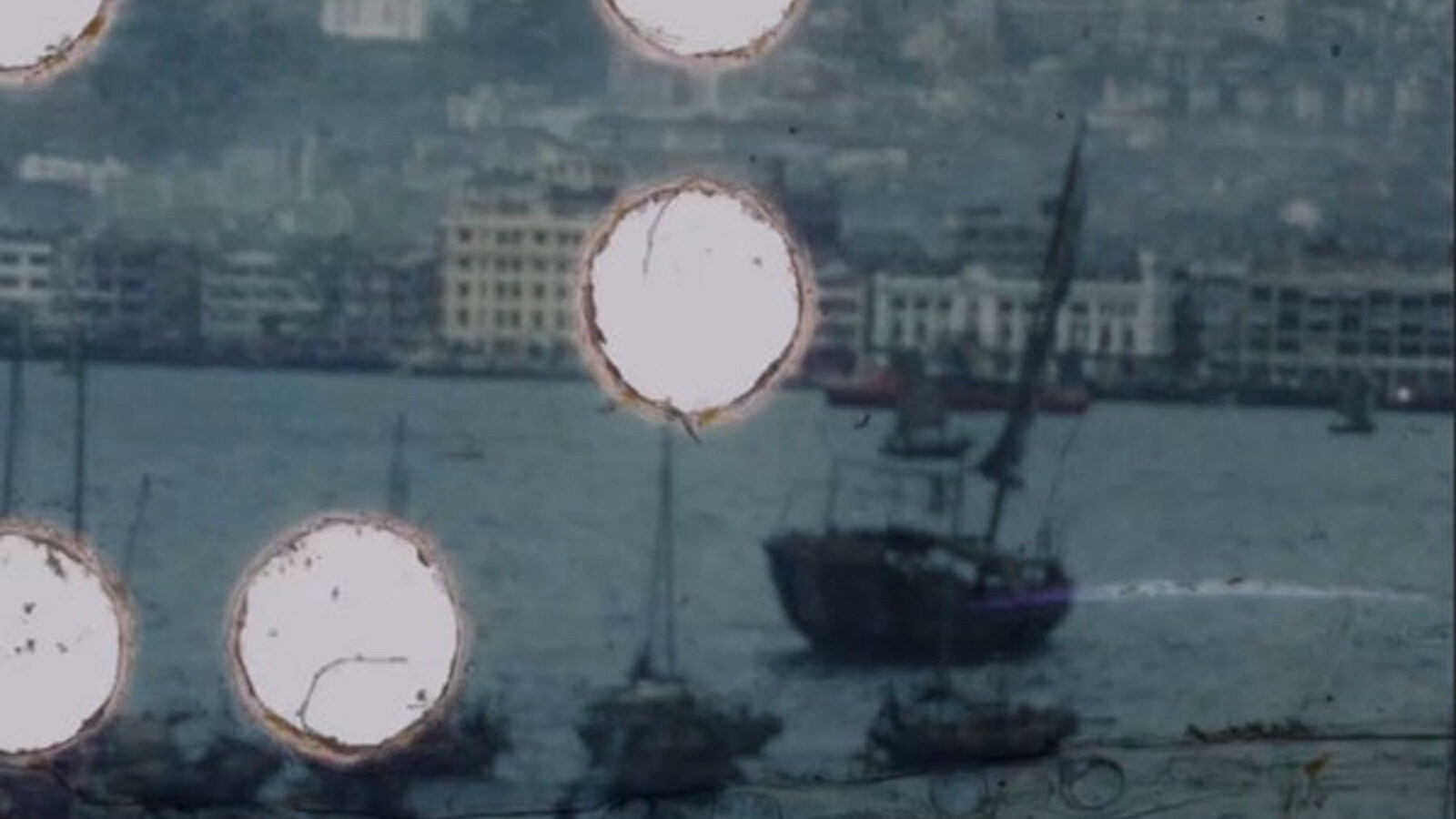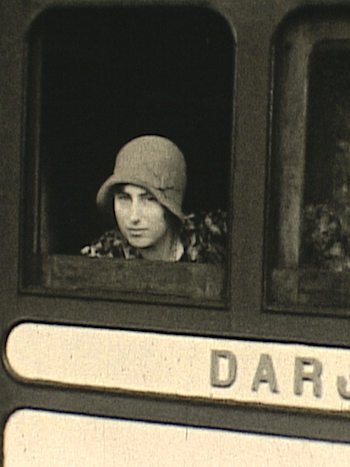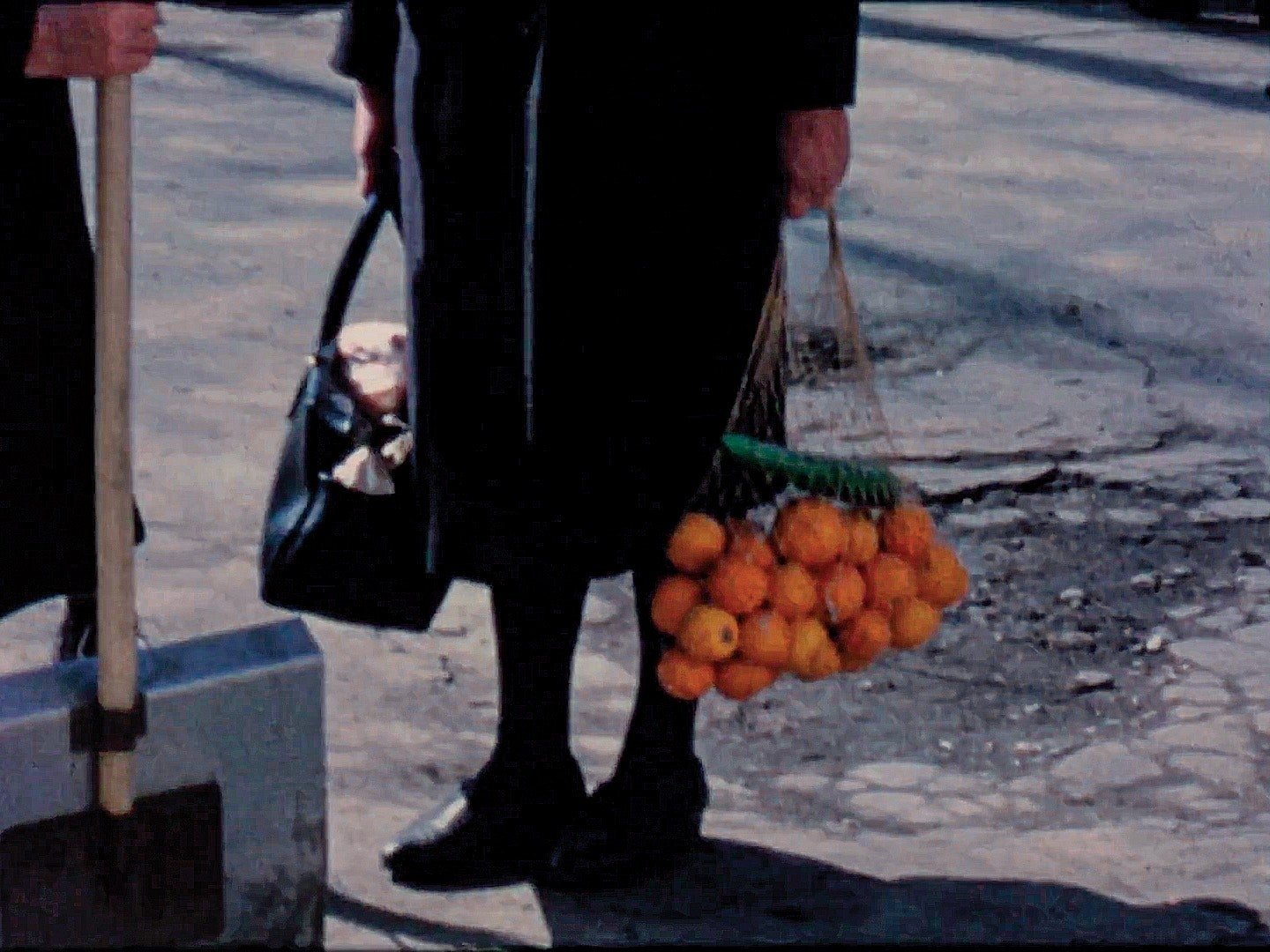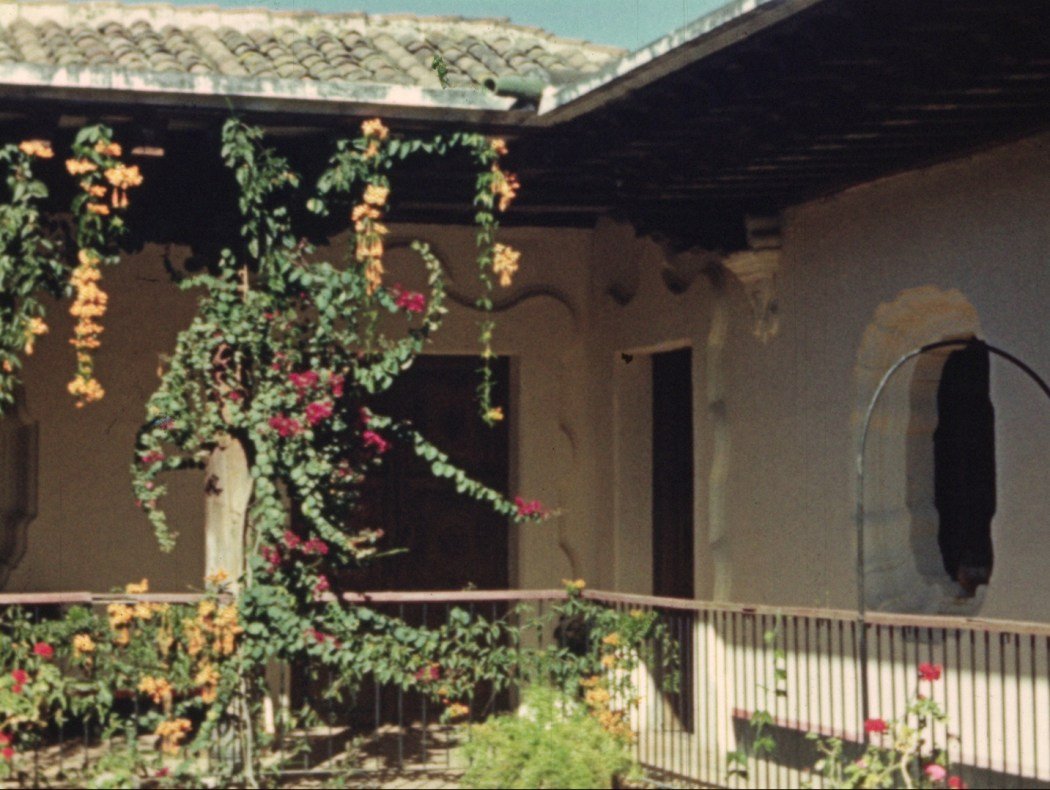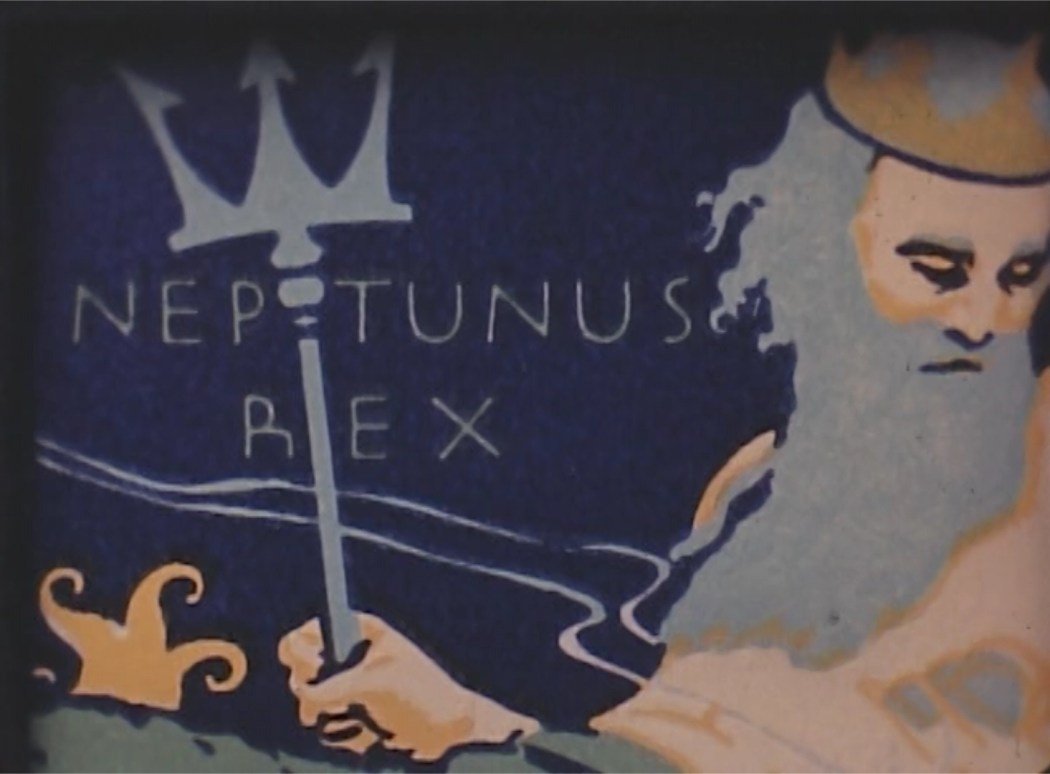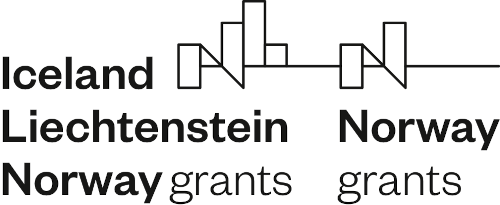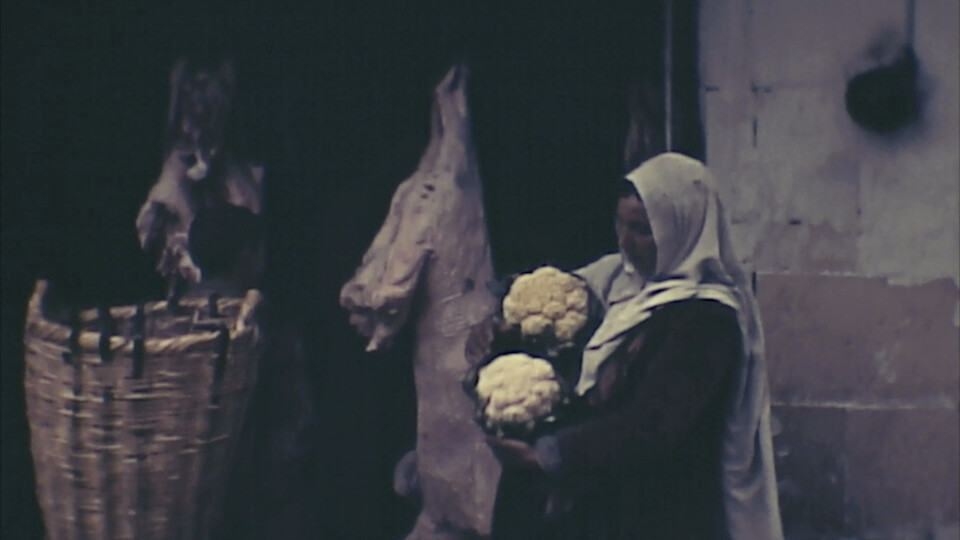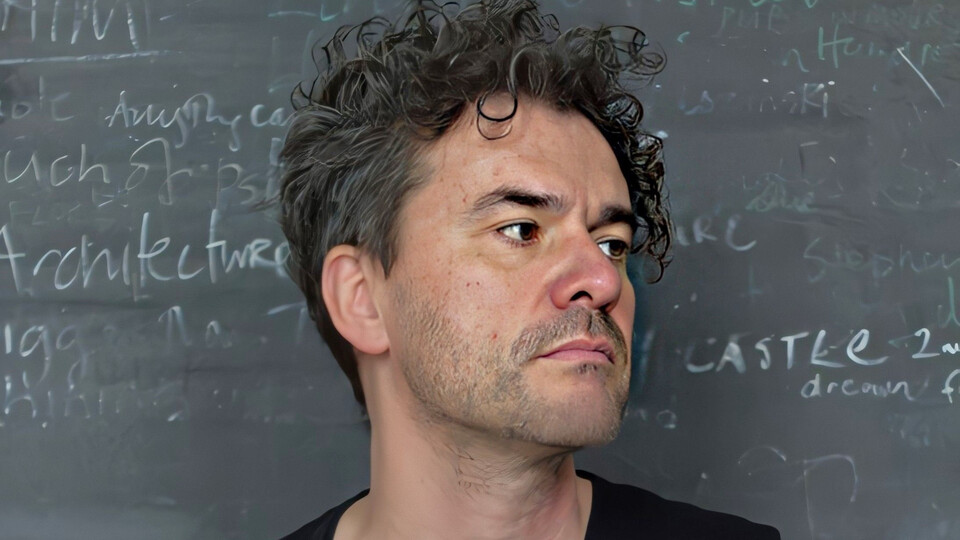media and documentary 2.0, Interview
On early female travellers and their travelogues
An interview with Courtney Stephens, director of the film essay Terra Femme, about her work with archival films, the female gaze, and early amateur travelogues. The film has been screened at documentary film festivals including MoMA Doc Fortnight, IDFA, and DokuFest Kosovo. The film is usually screened with a live commentary by the director herself, thus becoming a performative event, the same way these amateur travelogues by female directors were presented almost a hundred years ago. The film was recently acquired by Lightdox, and Stephens will be partnering with them for world sales.
During the making of the film, you mentioned that you went through a huge amount of archival materials and that some of the women directors had been anonymised or archived under the names of their husbands. Why do you think that was?
One part is the limited number of early travel films made by women, which has to do with access to materials and the whole history of hobbyist pursuits and who was encouraged to do them, which is really this deeper historical question of women’s creative production and how it shows up. Then there’s the question of who was travelling as well as the question of what happened to the films that were made – women’s home movies may be more likely to end up for sale on eBay than in an archive, and there is a slew of reasons for that which indeed pertain to women’s disappearance or anonymisation in the historical record.
The particular woman I talk about in Terra Femme had her films donated under her husband’s name to his alma mater, so in a sense this was a positive thing in that her films were preserved by virtue of his relationship with an institution – in this case the University of Pennsylvania. The films were in the archive under the name Mrs. John Shipley Dixon. This was also relatively common practice at the time – that your wife would be addressed in writing as Mrs. Tomáš Plocek, for example. That was just commonplace. But it’s a little unnerving to see her achievement of many years titled as such, isn’t it?
Yet it was also a form of decorum, and this is somehow at the heart of the project: these women were early non-fiction filmmakers but likely would not have thought of themselves as such. These films weren’t stepping stones to some kind of documentary film career. The world of amateur filmmaking was a contained space, and while some of the women exhibited their work in some kind of social sphere – in the towns where they lived, for example – they were otherwise largely anonymous, meant to be screened in living rooms or not at all. However, the possibly subliminal desire that making the films might carry these women into a different life… I think that is there, at least as something to speculate upon.
How did you choose the particular women you profile in the film?
I mean, I included almost everybody I came across! It isn’t a big pool, early female travelogueists, so I wasn’t very picky. Which was kind of valuable, because I really had to contend and draw out what little I did have instead of being seduced by the “best” versions of the genre. Rather, I had to be extremely inclusive, which pushed me to think beyond technical acuity to really consider what making these films meant to their makers as the fundamental through line. I wasn’t much interested in “women could do it too.”
I understand the film originally had the format of a live lecture, which grew over time. What was that process like?
Maybe similar to these women, I wasn’t so ambitious about this project and took a lot of time to make it, to sort of let it accumulate. I think the first iteration was in 2017, when I screened a couple of women’s films at Union Docs in New York. I had come across this kind of footage while looking for material for a different film – an essay film I had been shooting in India, which I ultimately abandoned. So, I was screening these raw materials as a kind of curiosity – “look what I came across” – for an audience comprised of other filmmakers, archivists, librarians – various people who would participate in this work of “deciphering” these documents. The form of the film really developed out of these in-person events over the years and learning from the people who were present. I presented in all kinds of different contexts, including a geography conference, an anthropology museum, and as part of a poetry reading. Now it plays in film spaces for the most part, but at that time it was really just a personal preoccupation, a research project. And the screenings were a way of casting a net for additional ways of thinking the documents through. It wasn’t really something I intended to finish as a film.
So, is there a possibility that you may add some more footage when you come across it, or is this the final cut right now?
*chuckles* It’s pretty final for now, though I do continue to learn through conversations. But I also don’t see a finished film as a stopping point, as an answer; it’s simply a repository of time.
And is it possible that maybe, in the future, you will go back to complete the abandoned film in India?
In a sense, the ideas of that film were sublimated into this one. I just got out of the way and let it be about other women’s work rather than my own ideas of what travel or distance means. I think it was an important process for me artistically to dissolve myself, to become an eye inside other lives rather than the eye behind a camera. But who knows, maybe I’ll work with my own material again in a different way.
Are there particular creators who work with found footage or archival materials that inspire you or have some influence on you?
Yes, many, but I think the person who guided me the most in making this film was the archivist Rick Prelinger, who’s based in San Francisco and, with his wife Megan, runs the Prelinger Archives – he suggested I get in touch with certain archives. Rick is somebody who is also interested in thinking geographically through archives. He has made a lot of projects that focus on the “lost landscapes” of different cities that are captured in amateur media. He assembles materials and screens them for audiences who provide the soundtrack, who call out commentary or identify unknown places from their own memory. The films are a vessel for oral storytelling and collectivity in knowledge production – really inspiring to attend. And this live element also mimics the way this material may have been originally exhibited, either formally or informally, with live annotation. I love these open-ended forms because they allow so much life to emerge from them, the residues of lived experience.
Yeah, I have to say, it was really exciting to see it in Kosovo, because it was something completely new, and I’d never seen anything like that before. I also wanted to ask you – during the screening of Terra Femme, you mentioned the concept of the female gaze, which was a term that really caught my attention. So, what does the female gaze mean to you?
I use this phrase in the film to get viewers thinking about the way we project ideas about neutrality and gender onto images and the ways images encode gendered ways of navigating the world, but not because I believe in a fixed thing called the female gaze. That would be very reductive. But it’s a useful term in that it gets people thinking about the way every image is the product of individual experience and looking for evidence of the person in the image. Just as a photograph of a place is not the place itself, there is mediation and framing that happen through the individual touch. There is no such thing as a neutral image. There is only the encounter.
Because of the non-professional aspect of these films – they are typically unedited – you get a good look into the conditions of image creation. Occasionally, people try to sell souvenirs to the filmmaker or beg from them. Power relations are on display. The point of view is very physicalised in this sense. You see the tour group they are travelling with. So, their gender is only one element of their identities, and it’s the one that organises the project, but class, race, and other modes of stratification are also present. There is insight to be found into how various forms of power circulate through images, often very quietly. Having said all this, it’s of course interesting to see women photographing other women, giving time to female activities in other cultures. It’s something you see in many of the reels, and in men´s travelogues I don’t think you’d see the same commitment of celluloid to something like public laundries, which appear again and again. I also don’t think the female gaze is laundry, but the documentation of other women’s material lives is a kind of beautiful secondary effect.
Your film also touches on several issues that the audience is left to wonder about, like the paradoxical relationship between woman and nature in the film. Because on the one hand, the footage portrays untamed and majestic nature, which could be connected to femininity and the desire to capture the ephemeral. But on the other hand, the filmmakers themselves were quite restricted at the time, due to technical limitations, a non-existent film language, and the mores of society. I was wondering how you perceive the relationship between the women and the nature they filmed.
Interesting question. Well, nature shows up in different ways in the footage and in relationship to the figure behind the camera. There is what you would expect in terms of vistas and waterfalls and so forth – compositions that seem tied to eighteenth- and nineteenth-century pictorial modes and suggest the ways that certain modes of looking are so overdetermined it’s almost as though we can only enter certain landscapes by way of flattening them. And a funny irony to this whole project of looking for what is unique in this material is that there are so many clichés.
But then there are scenes, situations, where women exist onscreen or are paying attention to the natural environment in ways that feel wholly original, or at least uncommon for that time. For example, there is some beautiful black-and-white footage by a woman named Christine Reid of her all-women mountaineering group in crampons and wool caps, laughing, crawling through caves with candles, and drinking from canteens in the snow. These images sort of casually dispose of the entire Western canon, which has both equated women with nature in abstract terms – a thing to be tamed – and also banished them from the landscape through myths of obliteration, like Persephone. These narratives punish women for entering open spaces alone. For someone like me, who grew up in the West, in dialogue with open spaces and vistas, you read John Muir and Emerson and think this is your inheritance, but it really is not. So that is what I’m thinking about when Mrs. John Dixon films the peaks from Yosemite Valley. What are the promises made by “elsewhere”? There are some very beautiful books by the French writer Nathalie Léger which take on this question.
While doing research for this project, I spent some time at the Royal Geographical Society in London, which was the centre of British exploration in the nineteenth century. They have huge globes from the 1850s, maps, and a massive photographic archive, which you can search through in their library. And I remember searching and becoming very interested in how the photos were tagged, the idiosyncrasy of the metadata. There’d be a picture of planting the Union Jack on top of a summit, and the tags might be “snow” and “peak” but also “heroic” – and I thought about how the mediation of the natural world, the transformation of place into meaning, into affect, gets inscribed into the archive. But these humble travelogues have none of that. They are largely uncelebrated; no one cares too much. They create meaning on their own behalf through where they give attention.
That’s very interesting, and that may be why the film charmed me – I really was blown away by that. I also wanted to ask you if you maybe plan on exploring this format through film essays, maybe working further with archival materials, not necessarily travelogues, in some other project?
I often work with archival media, and I am working on something about military films that document animal participation in the military. For a while, I’ve also wanted to make a film about archaeological excavation – there are so many expedition films of people sifting through dirt. And yes, I think my work is increasingly pretty language-driven. Terra Femme is perhaps the most personal thing I’ve made, basically in my own voice, but I would love to continue this mode of annotated filmmaking, this presentational mode that allows room for speculation or improvisation.
I’ve also read that you have experience with atypical film presentations, showing work in modes beyond screenings in a cinema, as a director and a curator. Do you perceive many differences between screening your films in a cinema and, for example, in a gallery? How do you perceive it through the lens of a director and a curator?
I do see the line between filmmaking and curation as rather thin. I think I’ve often started my research for film projects through curating and putting together associative programs before getting into my own projects. I have done other programming and presentations around female travel in narrative films, for example, and that research definitely shows up in the voiceover in Terra Femme. For years I co-curated a microcinema in Los Angeles called Veggie Cloud, and we did a lot of thematic programming, around everything from rocks and quarries to plastic surgery and motherhood – subjects I find interesting that also show up in my films. The act of sleuthing and researching, gathering, then refining, then inventing a form for an exhibition, whether it’s site specific or linked to live elements (I curated a program that linked films to puppet performances), is as creative as film editing, and in a way it’s creatively very similar to it. You’re controlling the way time unfolds. The only difference is that the event only happens once – but that’s the beauty too.
---
This article is a result of the project Media and documentary 2.0, supported by EEA and Norway Grants 2014–2021.

